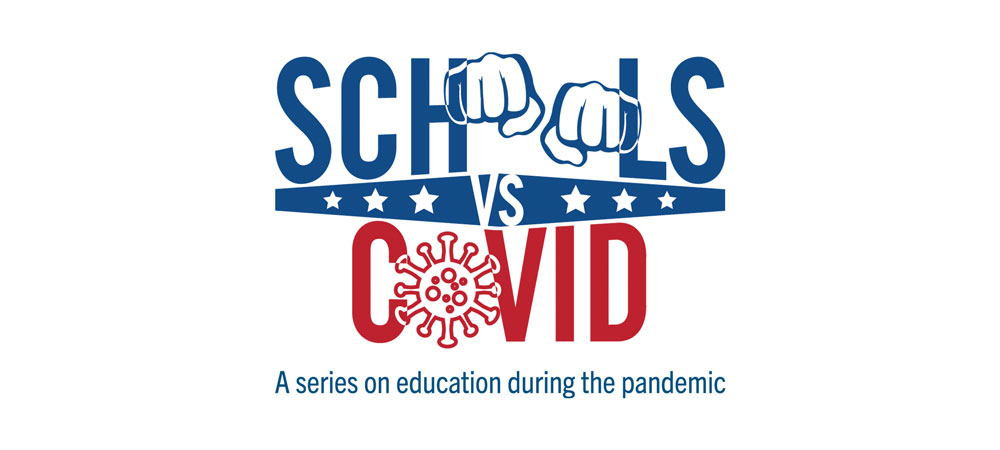Tom Rogers knows a thing or two about efficiency. Prior to becoming Superintendent of the Syosset (New York) Central School District, Rogers was District Superintendent of BOCES (Board of Cooperative Educational Services) for Long Island’s Nassau County, charged with creating economies of scale across 56 school districts on everything from special education services to classroom supplies.
So when Rogers (Ed.D. ’06, Education Leadership) calls the effort to reopen Syosset’s 10-school, 6,511-student system for the fall “the most daunting professional challenge of my life,” he’s not speaking in hyperbole.

BOTTOM LINE. “We have to reopen safely, we have to have a just society," Rogers says. "Both things are not negotiable.” (Photo: LinkedIn)
Take, for example, the second of the three re-opening plans — the so-called hybrid option, which provides for a combination of in-classroom and online instruction — that Syosset, like all of New York’s 700 school districts, was required to submit to the state in July. (On August 7th, New York State Governor Andrew Cuomo announced that schools could physically reopen provided that local district infection rates are under 5 percent.)
An affluent district that is given an A-plus ranking by NICHE, Syosset pivoted quickly to online instruction this past spring. But the success of any online option offered in the fall will depend on how many students opt in and whether they can be matched with an appropriate teacher who wants to teach online (teachers can ask for health accommodations which might include teaching online).
“As soon as you say, let’s create a school system where we simultaneously do more than one way of teaching, we could reduce our facilities’ capacity by 50 percent right across the board,” Rogers says. “But we don’t have the staff to have teachers teaching half as many students as they were before.”
And even if the district goes with its in-person reopening plan, which envisions nearly all students returning to school campuses, social distancing requirements dictate that the number of students in each classroom will have to cut by as much as 50 percent, and the number of children who ride buses to school would have to drop even further. That will get very expensive very quickly.
Of course, both of those scenarios presuppose, first of all, that schools will reopen their campuses. New York Governor Andrew Cuomo indicated he would decide in early August whether schools will reopen in person or virtually, based on each county’s moving daily average of COVID-19 infection rates. While the numbers in Nassau County, which has had 43,380 confirmed cases and 2,706 deaths since the pandemic began, are very low now, some health experts fear that the reopening of schools and workplaces could trigger a second wave of infections, especially with recent confirmation that young children do carry and can transmit the virus.
As soon as you say, let’s create a school system where we simultaneously do more than one way of teaching, we could reduce our facilities’ capacity by 50 percent right across the board. But we don’t have the staff to have teachers teaching half as many students as they were before.
—Tom Rogers
If that happens, the state would close schools again, and the Syosset system would return to the online-only instruction that was created last spring.
Now in his seventh year as Syosset’s superintendent, Rogers says that his biggest concern, aside from budgeting and staff issues, is maintaining the community spirit that helped the district pull together during the spring. That outpouring began with the students — for example, the sixth-grader who organized a drive-in movie that raised money for a food pantry in a neighboring town; the middle school student who created a social distancing app; and the freshman robotics team at Syosset High School, which made face shields on 3-D printers to donate to area nursing homes and health centers.
The need for that kind of civic spirit has only intensified since the police killings of George Floyd and other unarmed African Americans this past spring. By the time the pandemic hit, the school district had redesigned its code of conduct to reflect principles of restorative justice and formed a community task force with representation from Syosset’s interfaith council to examine issues of inclusivity. It also once again sent teachers to the 2020 Reimagining Education Summer Institute at Teachers College to train them in social justice applications to curriculum and pedagogy.
[Read two stories about TC's 2020 Reimagining Education Summer Institute: one on the keynote address by educator Lisa Delpit, which was titled “The Stories We Tell and the Fire This Time,” and the other on a talk by alumna Jamila Lysicott, on the need to conduct an "independent autopsy" on America's schools.]
“Standing alongside the COVID crisis, and equally important, is the Black Lives Matter movement,” Rogers says. “We have to reopen safely, we have to have a just society. Both things are not negotiable.”
As an “efficiency guy,” Rogers, like so many others, is frustrated by all the delays and uncertainty — but he also understands the need for deliberation at every level.
“I keep reminding myself that if I were the governor, I would want to take the time to get it right,” he says. “Our job is to serve our community. And we are watching our communities go through a tremendous crisis, and we’re trying to be in an all-hands-on-deck mode. I continue to be astounded by the Syosset community’s giant, generous heart. Even in the worst of times, we are among the best of people.”
